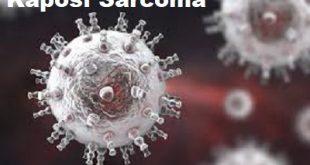Introduction
Keratomalacia is a pathological condition of the eyes which is caused as a result of deficiency of vitamin A. This disease causes scarring of the cornea and fibrotic deformity of the eyeballs. The role of vitamin A for the eyes is to maintain structures like cornea and conjunctiva. In Keratomalacia, there may be insufficient absorption or inadequate metabolism of vitamin A resulting in the defects. The cornea tends to become thin and soft so much so that it may get ulcerated.
Corneal ulceration
Keratomalacia, defined as collagenolysis, is the rapid breakdown or melting of the corneal stroma. Clinically, keratomalacia is characterized by a soft, gelatinous appearance of the cornea. This rapidly progressive condition occurs typically in response to corneal injury and involves infiltration of white blood cells. This disorder is bilateral and it affects both the eyes.
Keratomalacia affected eyes
Epidemiology
- It is a common cause of acquired pediatric blindness worldwide.
- In western societies, it can occur amongst those with a poor nutritional status.
What are the Causes of Keratomalacia?
Keratomalacia is an ocular disorder that is caused by the dietary deficiency of vitamin A. This condition is caused by taking ‘vitamin A poor foods’ such as:
- Beto carotene rich foods such as green leafy vegetables, orange-colored fruits and vegetables
- Retinoid rich foods such as liver and eggs
This deficiency disorder can also occur when the body is unable to absorb beta carotene and retinoids, or when the body is unable to convert beta carotene and retinoids to vitamin A.
Poor metabolism
Sometime due to certain body disorder due to celic syndrome, ulcerative colitis, heavy worm loads and sprue, there is poor absorption of vitamin A into the body cells. In such conditions our body is unable to absorb retinoid or beta carotenes, or sometime fails to convert beta carotene into vitamin A, as a result of which the patient become highly deficit in vitamin A.
Risk factors associated with Keratomalacia
- Infants and pre-schoolers living below poverty line
- Maternal vitamin A deficiency
- Old age can also put people at greater risk of vitamin A deficiency
- Malnourished people
- Uncontrolled phenylketonuria
- Zinc deficiency and iron deficiency may contribute
- Alcoholics
- Individuals who are pure vegans
- Consumption of a diet poor in vitamin A (such as skimmed milk rather than whole milk)
- Individuals who suffer from fat malabsorption, inflammatory bowel diseases
- Those who have undergone small bowel surgery
It is important to note that having a risk factor does not mean that one will get the condition. A risk factor increases ones chances of getting a condition compared to an individual without the risk factors. Some risk factors are more important than others.
What are the Signs and Symptoms of Keratomalacia?
The signs and symptoms of Keratomalacia include:
- Night blindness, which is poor vision in dim or poor light (especially at nights)
- Xerophthalmia – extreme dryness of the eyes
- Wrinkled cornea; progressive softening of the cornea and corneal cloudiness
- Grey deposit on the delicate membrane covering the whites of the eyes
- Cornea become highly perforated and soft, due to which the normal vision get disrupted.
- There is also wrinkling and cloudiness progression in the cornea during the initial stage of the disease.
- There might be the development of corneal ulcers surrounded by cornea which get dull and cloudy.
- Photophopic condition become highly intense. In certain condition corneal ulcer may get transformed into corneal scar due to infection.
- The formation of Bitot’s spot is a common phenomenon. Bitot’s spot is the proliferation of the cell. These are dry, foamy, silver grey substance found over the white membrane of the eye. In certain rare cases there might be the formation of white spot over retina.
What are the possible3 Complications of Keratomalacia?
The possible complications associated with Keratomalacia include:
- Blindness
- Corneal infection
- Corneal rupture (perforation)
How is Keratomalacia Diagnosed?
The diagnosis of Keratomalacia may involve:
- Complete evaluation of medical history along with a thorough physical examination
- Eye examination and vision test
- Color blindness test
- Laboratory measurement of serum retinol levels
Treatments and Medications
Vitamin A
- Replenishing the amount of vitamin A into the body can be the best way to prevent it. Decreasing the metabolic demand may also be combined in order to achieve the best results. Children with appropriate absorption are required to administer high vitamin supplements precisely 200, 000 IU vitamin A in the form of capsule or injections. Children with a history of severe malnourishment should be given capsules contain high dosage of vitamin A.
- Food supplements such as cod liver oil, carrot, sweet potato, butter, liver, spinach, pumpkin, apricot, papaya, mango, pea, broccoli, milk and tomato are found to be highly rich in vitamin A. Among them cod liver oil contains the highest quantity of vitamin A.
Chemotherapy
- Intake of appropriate drug may definitely provide you the best solution. Administration of topical antibiotics may offer relieve in reducing the acuteness of keratomalacia. Antibiotics ointment can control the secondary infection stage of xerophtalmia from aggravating it more.
Keratoplasty
- Sometimes the ocular vision resulted from keratomalacia tend to get highly digressed. As a result of which the chances for any cure to be functional get minimized. In such cases the option of keratoplasty is considered as the final option.
- In keratoplasty the cornea of the infected patient is replaced with the one having healthy medical history. This surgical operation can helps in achieving great results provided the practitioners involved are highly expert in their respective field
How can Keratomalacia be prevented?
Keratomalacia is a preventable disorder that can be prevented by including the following in one’s diet:
- Foods (fruits and vegetables) that are rich in beta carotene that includes green leafy vegetables (broccoli, spinach), cantaloupe, sweet potatoes, apricots, palm oil, and carrots
- Foods that are rich in retinoids such as liver, eggs, and fish
Children diagnosed with measles must have adequate vitamin A rich foods, since they are at an increased risk for Keratomalacia.
 Diseases Treatments Dictionary This is complete solution to read all diseases treatments Which covers Prevention, Causes, Symptoms, Medical Terms, Drugs, Prescription, Natural Remedies with cures and Treatments. Most of the common diseases were listed in names, split with categories.
Diseases Treatments Dictionary This is complete solution to read all diseases treatments Which covers Prevention, Causes, Symptoms, Medical Terms, Drugs, Prescription, Natural Remedies with cures and Treatments. Most of the common diseases were listed in names, split with categories.








Thanks a lot for a good explanation which is well understood, action should be taken in order to avoid more serious condition
Buenas
Esta genial tu redaccion y hay muchas cosas que no conocia que me has aclarado, esta maravilloso..
te queria corresponder el tiempo que dedicaste, con unas infinitas gracias, por enseñarle a personas como yo jojojo.
Besos, saludos
very informative.
I removed the pttygeriam in 2010,2017,cataract both eyes so I was on antidepressant before is amitryptiline which contributed in drying of my eyes beside that before I was a field worker.Do you know of any medication that is risky as well
Please consult an ophthalmologist.
I enjoy the article